Three days in Doha: art, sport, desert, heat
In our three-day Doha diary, we record the fruits of Qatar’s cultural transformation, which involved Jeff Koons, a glass palace of books, and a desert sunset on Richard Serra
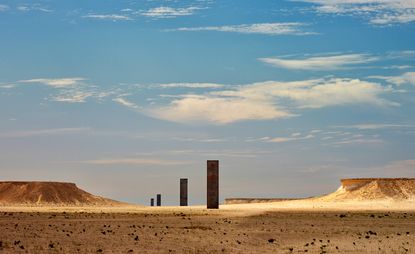
Few places rival the intensity of Doha. Even in late November, your face is cocooned in heat; the horizon wobbles, sizzles and steams. Somewhere between England and Qatar, the colours have turned from green to gold. Doha emerges like a gilded, water-encircled canvas, primed for anyone with a creative vision as vast as its landscape.
I’m with a small group of journalists at the invitation of Qatar Museums. We’re here to witness the fruits of the country's cultural transformation; one born with the discovery of oil in the mid-20th century, and that has since evolved into a contemporary Renaissance that has the attention of the world.
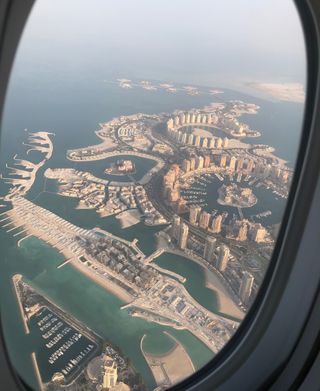
Day 1 in Doha: Jeff Koons, lunch at the Culture Pass Club, Christian Dior
At Qatar Museums’ Gallery Al Riwaq, we find Jeff Koons: ‘Lost in America’. This is the artist’s first show in the Gulf, and its significance is not lost on Qatar.
Curated by Massimiliano Gioni, the show is presented as part of the Qatar-United States 2021 Year of Culture. Koons has conceived it as an expanded self-portrait of sorts. We’re greeted by a photograph of him aged five, earnest, doe-eyed, and with that unmistakable, ready-made beam that’s followed him throughout his career. He wears the same expression at the press conference, where he quotes The Beatles’ ‘I am the Walrus’: ‘I am he as you are he as you are me’, and reasserts his well-trodden principles: transcendence, transformation and self-acceptance.

Jeff Koons poses during a press preview of his exhibition 'Lost in America' on 20 November 2021 at Qatar Museums Gallery Al Riwaq in Doha, Qatar. The exhibition is part of #QatarCreates, a cultural celebration connecting the fields of art, fashion, and design through a diverse programme of exhibitions, awards, public talks, and special events, all taking place in the heart of Doha.
These days, the locations of Koons’ exhibitions feel just as significant as their contents. As a concession to regional norms, the show is devoid of the raunchier facets of his work, yet it doesn’t feel deprived.
The sheer enormity of the museum means the pieces are socially distanced. Until now, I had never quite appreciated the extent of Koons’ calculating precision, his ability to optically toy with the viewer and suspend disbelief. He metamorphoses materials: bronze resembles vinyl, plaster looks like a cotton-covered inflatable, and, in his newest works, marble is dressed down as though an oversized ceramic trinket. These replicas of replicas reflect just how easily we fall for artifices; rather than critiquing consumerism, they celebrate it.
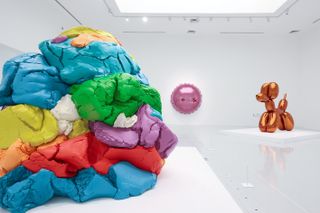
Installation view of Jeff Koons, 'Lost in America' at Qatar Museums Gallery Al Riwaq in Doha, Qatar.
At lunchtime, we head to Qatar’s first members-only arts club, Culture Pass Club. Think Soho House, but if every house consisted of multiple houses encircling an idyllic courtyard and had interiors by the likes of India Mahdavi, Rossana Orlandi and leading local designers including Aisha Al-Sowaidi and Wadha Al Hajri.
Wallpaper* Newsletter
Receive our daily digest of inspiration, escapism and design stories from around the world direct to your inbox
Next on the itinerary is M7, Qatar’s 312,000 sq ft hub for fashion and design innovation. Earlier in November, the fashion world elite gathered at the art centre for the Fashion Trust Arabia prize, recognising emerging talent in the Middle East and North Africa region.
Following a momentary distraction from a thorny Isa Genzken sculpture in M7’s atrium, we shift our focus to ‘Christian Dior: Designer of Dreams’. It’s a reinvention of a resoundingly successful exhibition that previously showed in Paris, London, Shanghai and New York, and features pieces from the private collection of Her Highness Sheikha Moza bint Nasser, mother of the Emir and long-time Dior client.

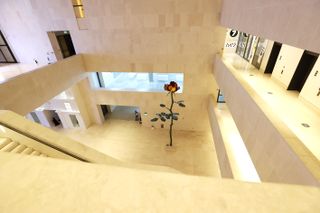
Top and above: : Exterior and interior view of M7 during the 'Christian Dior: Designer Of Dreams' exhibition on November 20, 2021 in Doha, Qatar.
In the evening, we head back to Gallery Al Riwaq for the ‘Lost in America’ reception. It’s disorientating and refreshing to mingle at an art world vernissage unaccompanied by flutes of champagne (In deference to Sharia law, the Qatari government places strict restrictions on the availability of alcohol). But what it lacks in booze, Qatar makes up for in juice, offered liberally, and in most shades of the rainbow. Armed with hyper-real sobriety and tripping on a sugar high, we’re all ready to focus on the art.
It’s dinnertime, and presumably owing to good behaviour, we’ve been invited by Her Excellency Sheikha Al Mayassa Bint Hamad Al-Thani, chairperson of Qatar Museums (and cultural arbiter of the nation) to attend the official dinner for Koons. I’m sartorially ill-prepared for the occasion, but manage to dress up my practical desert-wear to a passable standard.
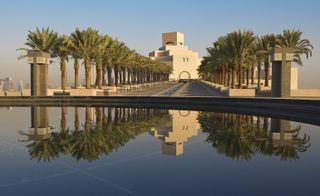

Museum of Islamic Art situated 60m off the Doha Corniche on an island made of reclaimed land.
We’re ushered to a palatial first-floor courtyard at the IM Pei-designed Museum of Islamic Art – which is officially closed for renovation. The architect, who was 91 when he was coaxed out of retirement for the project, was given free rein to choose any spot in Doha for the museum, and he insisted that future buildings could not encroach on its space. The solution? Qatar gave the building its own island.
There’s more multicoloured juice on silver platters, and American-themed food on the menu. There’s also a photo booth for the star-studded guest list. (Photo booth is an understatement, I mean a self-contained studio where Brigitte Lacombe, portraitist to superstars, is taking the photographs).
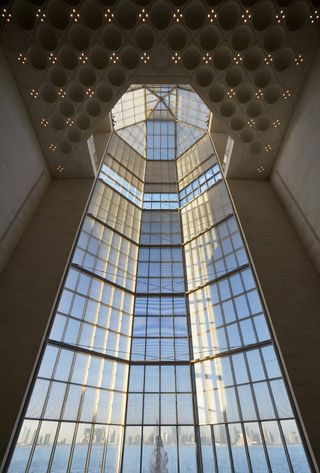
The Museum of Islamic Art features a glass curtain wall that offers views of the Gulf and the West Bay of Doha.
After dinner, we’re taken to the underground conservation laboratory. An expert restorer shows us to his workstation, where the magic is happening. We swarm like insatiable magpies around a falcon from 17th-century India: solid gold and laden in rubies, emeralds, diamonds and sapphires. It’s impossibly beautiful, priceless beyond comprehension, and shimmers to the point of hypnosis. Suddenly, this begins to feel rather familiar – Jeff Koons would be all over this! Right on cue, he arrives at the lab for a closer look.
Day 2: Sport, Virgil Abloh, a history of Qatar
I have a hangover. Not the post-alcohol kind, but a juice-induced sugar comedown of epic proportions. But enough whining, it’s time for sport.
Today is the first day of the inaugural Qatar Grand Prix Formula One and sport is on the agenda. Around Doha, construction is in abundance as Qatar spruces up to host the 2022 World Cup, which will kick off in precisely one year. It’s a palpably exciting crescendo, but has not been without controversy. Qatar’s treatment of migrant workers responsible for World Cup-related infrastructure has been under intense scrutiny. The Qatari government disputed a 16 November 2021 report by Amnesty International claiming that labour reforms have not translated into changes on the ground, but also stated that ‘Qatar has never shied away from acknowledging that its labour system is still a work in progress.’
We are treated to a preview tour of the soon-to-open 3-2-1 Qatar Olympic and Sports Museum, sited adjacent to the Khalifa International Stadium. As an arts journalist, I’m a little out of my depth, but nonetheless an eager student. The museum aims to educate and entertain, offering a history of Qatari sport while providing family-focused interactive games to encourage physical activity.
Next, we head to the W Hotel for another dose of Jeff Koons. This time, he’s in conversation with Sheikha Al Mayassa as part of the Art for Tomorrow Talks, in association with The New York Times. Just as I reflect on how, in the last three months, I have spent more time in the physical presence of Koons than I have my own mother, it’s time for art by Virgil Abloh.
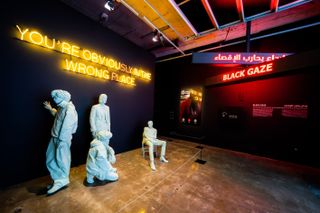
Installation view, ‘Virgil Abloh: Figures of Speech’, Fire Station, Qatar Museums. Exhibition Design: ©️ AMO/Samir Bantal
Like Koons’, this is Abloh’s first museum exhibition in the Middle East. Held at Fire Station, an arts hub and artist residency centre, ‘Figures of Speech’ offers a deep dive into Abloh's pioneering media practice spanning visual arts, music, fashion, architecture and design. (Since our visit, the show – a mid-career retrospective – has taken on a new poignancy. On Sunday 28 November, in a moment that shook the world, the celebrated artist Virgil Abloh passed away from a rare cancer, aged 41.)
The next stop is the Jean Nouvel-designed National Museum of Qatar, which blooms from the landscape like a desert rose. This extraordinary building comprises flying saucer-like discs of varying diameters, which engulf the restored palace of Sheikh Abdullah bin Jassim Al Thani, son of the founder of modern Qatar.
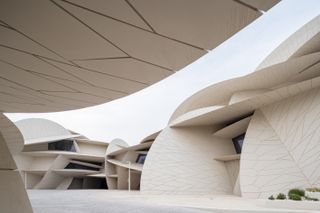
Exterior view of the National Museum of Qatar.
The galleries tell us about the history of Qatar, without following the conventional museum formula. Here, everything from the natural history of the Persian Gulf to the establishment of the Qatari state, and to the discovery of oil is narrated via innovative audiovisual elements, seamlessly integrated into Nouvel’s design. The museum celebrates the heritage of Qatar, but also puts a spotlight on its rapid modernisation, growth and extraordinary cultural change.
We head back to the hotel on Doha’s gleaming new UNStudio-designed metro. Completed in 2019, the network is divided into three travel sections: Standard, Family (for solo women and anyone commuting with children) and Gold (for Goldclub Travel Card holders). Boasting rapid speeds, onboard Wi-Fi and USB charging for Goldclub members, this is surely the envy of the subterranean world, and makes most of the London Underground look and smell like Dante’s Inferno.

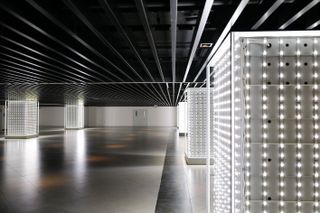
Top: The Bin Mohammed train station on the gold line in the Doha Metro, a rapid underground transit train system in Doha, Qatar, that became operational in 2019. It has three lines with an approximate overall length of 76 km and 37 stations. Above: A general view of the exit of the Katara Doha Metro train station, an automated rapid transit system underground and overground railway built for the Qatar 2022 FIFA World Cup in Doha, Qatar.
Day 3: Kader Attia, a palace of books, and the desert sun set on Richard Serra
We arrive at Mathaf: Arab Museum of Modern Art. Following a momentary malfunction of the Ehteraz app (Qatar’s mandatory Covid-19 contact-tracing service), I’m soon in the clutches of ‘Kader Attia: On Silence’, a show of staggering scale, depth and intensity. Attia turns his focus to the complex histories of the Middle East and North Africa, and Doha itself, a multicultural global city of migration and constant social and political evolution.
At the centre of the show is the title work, On Silence. One of two new commissions for the exhibition, it comprises a room filled with prostheses suspended from the ceiling. Though unsettling in their number, they are presented as objects of restoration and optimism for those who have lost limbs in conflict. Attia uses silence as a vehicle for communication: silence to cut through the noise of human suffering (colonialism, political oppression and environmental devastation), enforced silence as a catalyst for trauma, voluntary silence as a conduit to reckoning and repair.

Ghost, 2007 was Kader Attia’s breakthrough work, a large mass of kneeling bodies made of layers of aluminium foil, questioning narratives of multiculturalism and how they are dissolved by contemporary politics. All artwork images: installation views from ‘Kader Attia: On Silence’, Mathaf: Arab Museum of Modern Art, Doha. Image courtesy of the artist and Mathaf.
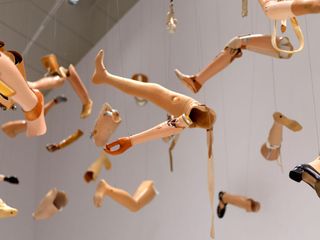
On Silence (2021) is one of two new works in the show by Kader Attia. A number of protheses hang from the ceiling, inviting the viewer to look up and consider these varied extensions of possibilities for amputated bodies. Image courtesy of the artist and Mathaf.
In the 1970s, Doha was but a few modest buildings surrounded by desert. Its statement piece was the spaceship-esque Sheraton Hotel, a striking example of modernism by architect William L Pereira (who also designed San Francisco’s Transamerica Pyramid) that perfectly straddles utopia and dystopia. These days, the skyline is a tapestry of architectural delights, particularly in the Education City.
We’re here to visit the Rem Koolhaas-designed Qatar National Library, a vast, tiered, glass-clad palace of books and artefacts fit for the digital age. This high-tech sanctuary for research also functions as a custodian of Qatar’s heritage by preserving and making accessible the country’s recorded history.

Qatar National Library, which opened in 2017, designed by Dutch architect Rem Koolhaas.
As the sun sets on our tour of Doha, there is one final stop, the middle of the desert. Our Jurassic Park-style off-roaders jiggle over the undulating dunes through the Brouq Nature Reserve. After 20 minutes of dizzying motion, we reach our destination: a natural corridor formed by gypsum plateaus, home to one of the most triumphant examples of public art: Richard Serra’s East-West/West-East (2014). The installation comprises four vertiginous slabs of Corten steel, each 14m high, with rusted-matte surfaces absorbing the ethereal orange sun.
Spanning more than a kilometre, East-West/West-East slices up the sky like an oversized game of dominoes being played by some higher, much larger power. If an epiphany could occur anywhere, it’s surely here.
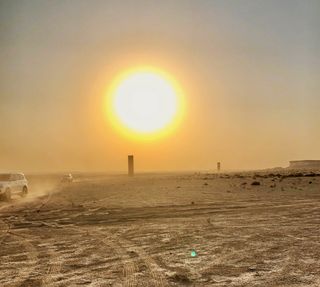
Richard Serra East-West/West-East (2014), sited in a natural corridor of gypsum plateaus in the Brouq Nature Reserve, Qatar
INFORMATION
qm.org.qa
Harriet Lloyd-Smith was the Arts Editor of Wallpaper*, responsible for the art pages across digital and print, including profiles, exhibition reviews, and contemporary art collaborations. She started at Wallpaper* in 2017 and has written for leading contemporary art publications, auction houses and arts charities, and lectured on review writing and art journalism. When she’s not writing about art, she’s making her own.
-
 The 2024 Ivor Novello nominations for songwriting have been revealed
The 2024 Ivor Novello nominations for songwriting have been revealed77 British and Irish songwriters and composers make up this year's nominees, announced tonight at London's Groucho Club
By Charlotte Gunn Published
-
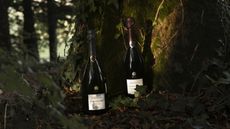 Why Bollinger’s La Grande Année 2015 champagne is worth celebrating
Why Bollinger’s La Grande Année 2015 champagne is worth celebratingChampagne Bollinger unveils La Grande Année 2015 and La Grande Année Rosé 2015, two outstanding cuvées from an exceptional year in wine-making
By Melina Keays Published
-
 Lexus installation explores time at Milan Design Week 2024
Lexus installation explores time at Milan Design Week 2024Lexus brought designer Hideki Yoshimoto’s ‘Beyond the Horizon’ to Milan’s Art Point, part of its ongoing series of collaborations with Fuorisalone
By Nargess Shahmanesh Banks Published
-
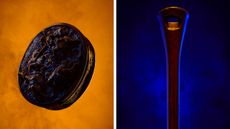 Royal College of Physicians Museum presents its archives in a glowing new light
Royal College of Physicians Museum presents its archives in a glowing new lightLondon photography exhibition ‘Unfamiliar’, at the Royal College of Physicians Museum (23 January – 28 July 2023), presents clinical tools as you’ve never seen them before
By Martha Elliott Published
-
 Museum of Sex to open Miami outpost in spring 2023
Museum of Sex to open Miami outpost in spring 2023The Museum of Sex will expand with a new Miami outpost in spring 2023, housed in a former warehouse reimagined by Snøhetta and inaugurated with an exhibition by Hajime Sorayama
By Harriet Lloyd-Smith Published
-
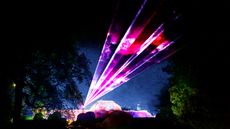 The best 7 Christmas installations in London for art lovers
The best 7 Christmas installations in London for art loversAs London decks its halls for the festive season, explore our pick of the best Christmas installations for the art-, design- and fashion-minded
By Harriet Lloyd-Smith Published
-
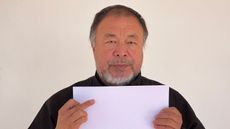 Ai Weiwei to sign blank sheets of paper with UV ink for Refugees International in London this weekend
Ai Weiwei to sign blank sheets of paper with UV ink for Refugees International in London this weekendTo mark Human Rights Day (10 December 2022), Ai Weiwei will take to Speakers' Corner in Hyde Park to sign sheets of A4 paper in UV ink, distributed free. We interview the artist to find out more
By TF Chan Published
-
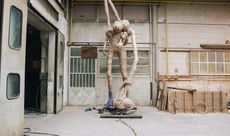 Francis Upritchard blends science fiction and folklore in epic new Sydney Modern Project commission
Francis Upritchard blends science fiction and folklore in epic new Sydney Modern Project commissionWe explore the making of Here Comes Everybody, Francis Upritchard’s fantastical bronzes sculptures for the much-anticipated Sydney Modern Project
By Kate Goodwin Last updated
-
 Qatar transforms into a museum of public art ahead of 2022 FIFA World Cup
Qatar transforms into a museum of public art ahead of 2022 FIFA World CupAs anticipation builds in Qatar ahead of the 2022 FIFA World Cup in November, Qatar Museums has expanded its public art programme with 40 new works by the likes of Jeff Koons, Ugo Rondinone, Yayoi Kusama, Katharina Fritsch, Shilpa Gupta and Shouq Al Mana
By Harriet Lloyd Smith Last updated
-
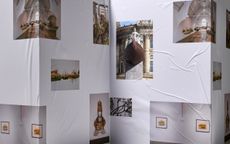 At home with Hew Locke
At home with Hew LockeOur ‘At home with’ interview series explores what creatives are making, what’s making them tick, and the moments that made them. This time, we step over the threshold with Guyanese-British artist Hew Locke
By Harriet Lloyd Smith Last updated
-
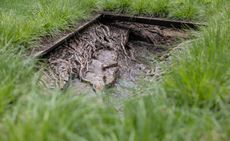 Cristina Iglesias’ radical public sculpture: ‘I’m not trying to recreate nature’
Cristina Iglesias’ radical public sculpture: ‘I’m not trying to recreate nature’With projects in London and New York, including an installation at the Royal Academy, it’s a major moment for Cristina Iglesias. We speak to the Spanish artist about her explorations of public space
By Jessica Klingelfuss Last updated